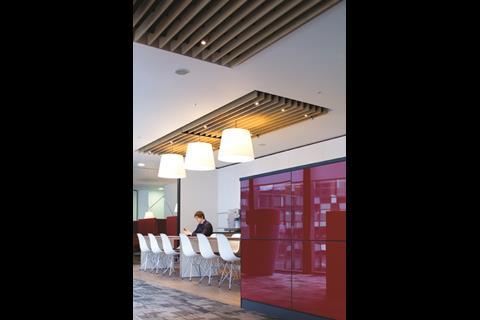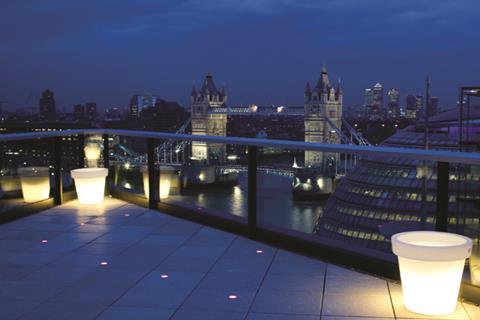These days the corporate world is falling over itself to improve its environmental credentials. Thomas Lane takes a look at the newest, greenest, office building on the block and finds out how your office can be ’outstanding’ too
Professional services firm PwC has just moved into a shiny new office on the south bank of the Thames. This building enjoys the kudos of being the first large office scheme in the UK to gain top marks in a BREEAM test for its environmental performance, gaining the coveted “outstanding” rating at design stage. Fit-out designer BDP says the post-construction assessment looks set to beat this. If you are contemplating building an office similar to PwC’s, check out our 10-point guide to what BREEAM “outstanding” is and how to get it.
1. What is a BREEAM ’outstanding’?
BREEAM is the BRE’s environmental assessment methodology. It covers a basket of environmental issues including energy and water use, materials impact, public transport proximity and waste. Credits are awarded for measures that address these points, with a maximum score of 100. The old “excellent” rating required a score of at least 70% but in 2008 a new “outstanding” category was introduced, which requires a score of 85%.
2. Why go through the pain?
Good question, as getting a BREEAM “outstanding” is hardly a stroll in the park. The main reason clients bother is because they want to shout about how green they are. In the case of PwC they see it as a valuable recruitment tool as potential employees value working for a company that cares about the environment. It also looks good in the annual CSR report and the energy efficiency improvements should save money on bills.
3. Is it expensive?
That depends. Stephen Runicles, who heads up fit-out designer BDP’s sustainability team, says he was warned that going for a BREEAM “outstanding” could add 15% to the building cost. In reality it added £2.50/m2, which is about 2% of the building cost. He says PwC wanted to see a return on its investment. “It had to stack up financially and they audited it at every stage,” he says adding that most of the additional measures have a payback of less than five years.
4. Do BREEAM ’outstanding’ buildings have to shout ’eco’?
The first office to gain an “outstanding ” was a small office for Defra in Alnwick, Northumbria. Casual observers were left in no doubt this was an
eco-building with PV panels used to shade the windows, three wind turbines and generous use of timber cladding. PwC proves this is unnecessary; their building is a slick Foster + Partners-designed glass effort shaped like an arrow to maximise the stunning views over the river Thames.
5. Any tips for getting a high score?
Don’t leave all the work until the last minute. PwC found a building at the early stages of design. Originally the developer’s target was a BREEAM “very good” but PwC wanted to raise the bar. Examining every aspect of the design to see how it could be improved on was vital to getting the “outstanding” rating, an exercise that needed the buy in of the whole team. “If PwC didn’t have the will to do it and the developer wasn’t prepared to pull out all the stops we couldn’t have done it,” says Runicles. “Everyone worked together to achieve it.”
6. What are the most important bits to get right?
Focus on energy use. “You need to get an EPC (energy performance certificate) “A” rating,” says Runicles. “Energy forms the biggest and hardest part of BREEAM “outstanding”. That doesn’t mean you can cruise through all the other aspects of BREEAM, you still need to think about materials, cycle racks and water use.
7. If energy is such a big deal, any useful tips?
The building was always going to be powered by a rapeseed oil-fired tri-generation CHP (combined heat and power) system that supplies 40% of the building’s energy. The plan to power trench heaters with electricity was dumped in favour of using heat rejected from the chillers. More efficient chilled beams replaced fancoil units. The state-of-the-art lighting includes daylight linking, dimmers, presence detection and user control.
8. What about the other requirements?
The concrete elements of this building contain 80% recycled aggregates, which is much higher than the more normal 50%. Waste was cut to a minimum by specifying pre-cut plasterboard. The contractor had to operate a strict waste recycling programme. There was even an aspiration to eliminate all PVC from the building but the data cables are only available with PVC sheathing. Food waste is sent away for anaerobic digestion although this doesn’t gain any BREEAM points. PwC does it anyway.
9. Anything else to worry about?
Yes, up to 10% of extra marks are gained for demonstrating innovation. Exemplar features win innovation credits and design teams can apply to BRE to get their specific idea recognised as an innovation. On this project using 80% recycled aggregate gained an innovation credit. PwC has managed to source a supply of recycled cooking oil to run the trigen CHP system that is even greener than rapeseed oil, so gained a credit for that. The use of an experienced BREEAM advisor from the beginning won another two credits.
10. Now I’ve finished, can I relax?
No, any building that has gains a BREEAM “outstanding” must complete a BREEAM in-use assessment to prove performance. This building is comprehensively metered; knowing where the energy is going will help optimise building performance and make the post occupancy evaluation easier. Innovation credits were gained for fitting screens displaying energy use to help make users more careful about switching things off. Which is probably the hardest part of the exam.


































1 Readers' comment